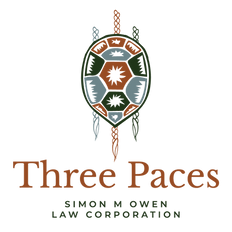“Uh… you know that stuff doesn’t really exist, right?”
I didn’t hear this ten years ago – and I didn’t hear it from a stodgy judge or legal bureaucrat (although I certainly could have). I heard this comment – referring to Indigenous law – recently from one of the high-level band managers who are central to First Nation planning, management, and decision-making. And I think I know where they were coming from.
For all the changes of rhetoric and tone, for all the admissions and apologies, for all the developments in legislation and jurisprudence (which are both many and significant), Indigenous law still suffers from an applicability bias. Simply put, even if we are representing or working for/with Indigenous governing bodies and authorities, the form, language, structure – and yes, substance – of the laws we tend to privilege remain essentially non-Indigenous. This seems true even as broad legal principles, declarations, and assertions are indigenized (there are some beautiful legislative preambles out there). But when we (meaning credentialed/Canadianized professionals) are tinkering with the intricate bits that make up and maintain law’s massive machinery, it’s just so much easier to reach for the tools and screws we know.
I don’t mean to imply that working from the top-down isn’t important – but Indigenous law won’t truly ‘matter’, and won’t truly re-assume rightful, responsible authority within and throughout Indigenous and inter-societal governance – unless and until we learn how to let it guide the conversations and conventions that inform law’s minute layers and levels of regulation and process. I’m looking for ways in which Indigenous law re-roots from the ground up.
Of course this isn’t easy and it will not just happen. As my old boss Val Napoleon says, “law is something people actually do”, and, historically at least, Canadian law and legal professionals have done a very poor job of hearing and heeding the ways in which Indigenous people, families, and societies have and continue to “do law” (differently) in diverse ways. Or maybe we’ve done a very good job of repressing and replacing Indigenous laws with our own. But those days are done – and thankfully there are plenty of strong Indigenous ways of doing law – and strong Indigenous law doers – both alive and applicable to the places, relations, and problems who need them. It’s great – as legal instruments like UNDRIP necessarily do – to declare and celebrate Indigenous law’s existence. But Canada’s hard work in making space for these laws’ practical presence, their place in detailed, day-to-day action – that’s the work that is just beginning.

Comments